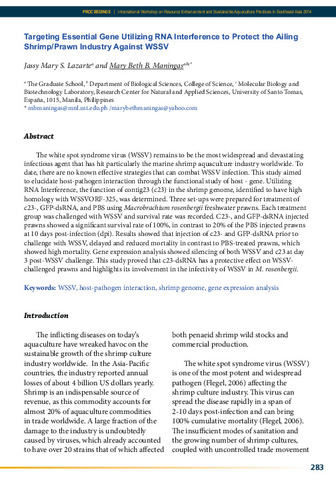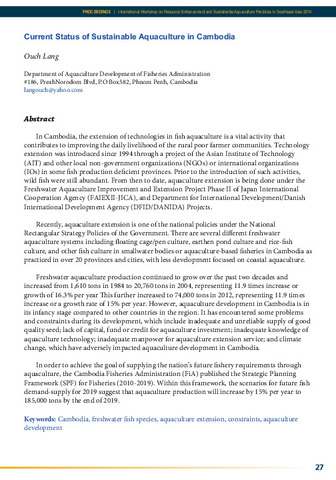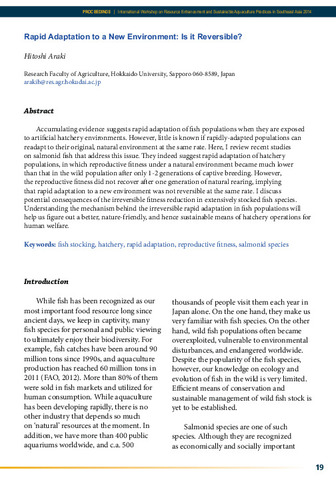01 SEAFDEC/AQD Publications: Recent submissions
266-270 / 2113
-
Preliminary trials on the effects of weaning and larval diets on survival and growth of silver therapon (Leiopotherapon plumbeus) larvae
(Aquaculture Department, Southeast Asian Fisheries Development Center, 2015)Success in larval rearing of silver therapon can be achieved through early weaning of fish larvae from live food to artificial diet. Two experiments were carried out to investigate the effects of (a) weaning age (abrupt ... -
Targeting essential gene utilizing RNA interference to protect the ailing shrimp/prawn industry against WSSV
(Aquaculture Department, Southeast Asian Fisheries Development Center, 2015)The white spot syndrome virus (WSSV) remains to be the most widespread and devastating infectious agent that has hit particularly the marine shrimp aquaculture industry worldwide. To date, there are no known effective ... -
Current status of sustainable aquaculture in Cambodia
(Aquaculture Department, Southeast Asian Fisheries Development Center, 2015)In Cambodia, the extension of technologies in fish aquaculture is a vital activity that contributes to improving the daily livelihood of the rural poor farmer communities. Technology extension was introduced since 1994 ... -
Rapid adaptation to a new environment: is it reversible?
(Aquaculture Department, Southeast Asian Fisheries Development Center, 2015)Accumulating evidence suggests rapid adaptation of fish populations when they are exposed to artificial hatchery environments. However, little is known if rapidly-adapted populations can readapt to their original, natural ... -
Culture of Scylla serrata (Forskal) in cement ponds
(Rajiv Gandhi Centre for Aquaculture (MPEDA), 2015)Male and female Scylla serrata juvenile crabs were stocked separately in cement ponds (14 x 8 x 0.8 m; 90 m3) and reared for 90 days. The study was conducted at the Fisheries Research Station, JAU. Okha, Gujarat. The crabs ...






